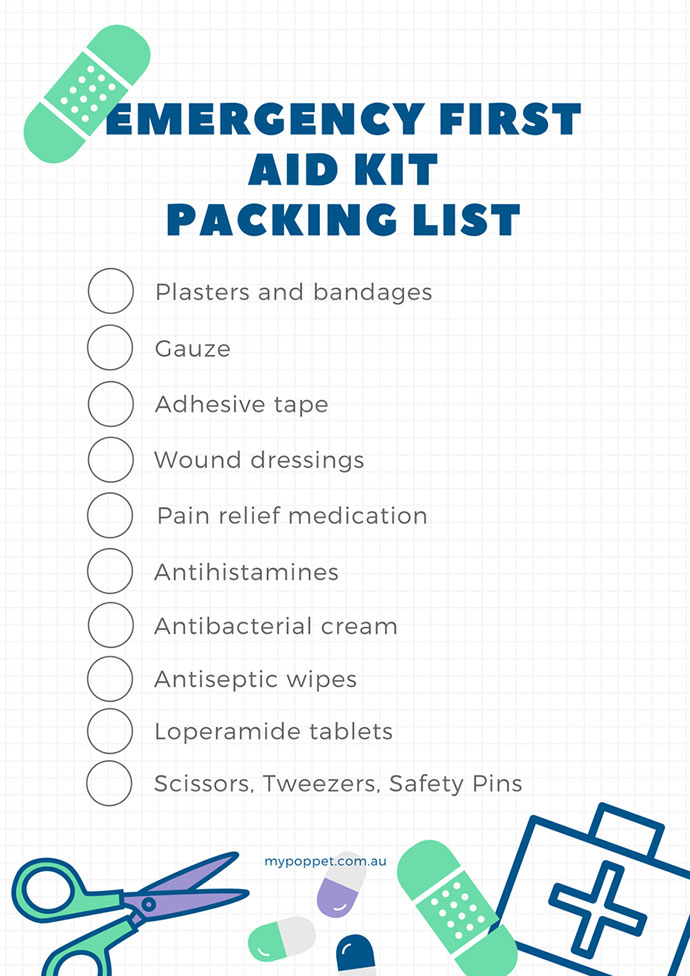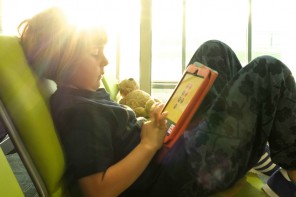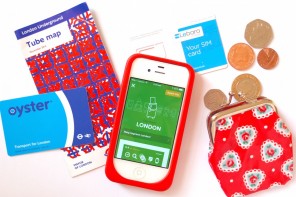If you’re planning the trip of a lifetime, you probably have a lot to think about. From booking flights and accommodation, to sorting out your visas, and packing your backpack. But there is one thing you may have forgotten about – an emergency first aid kit.
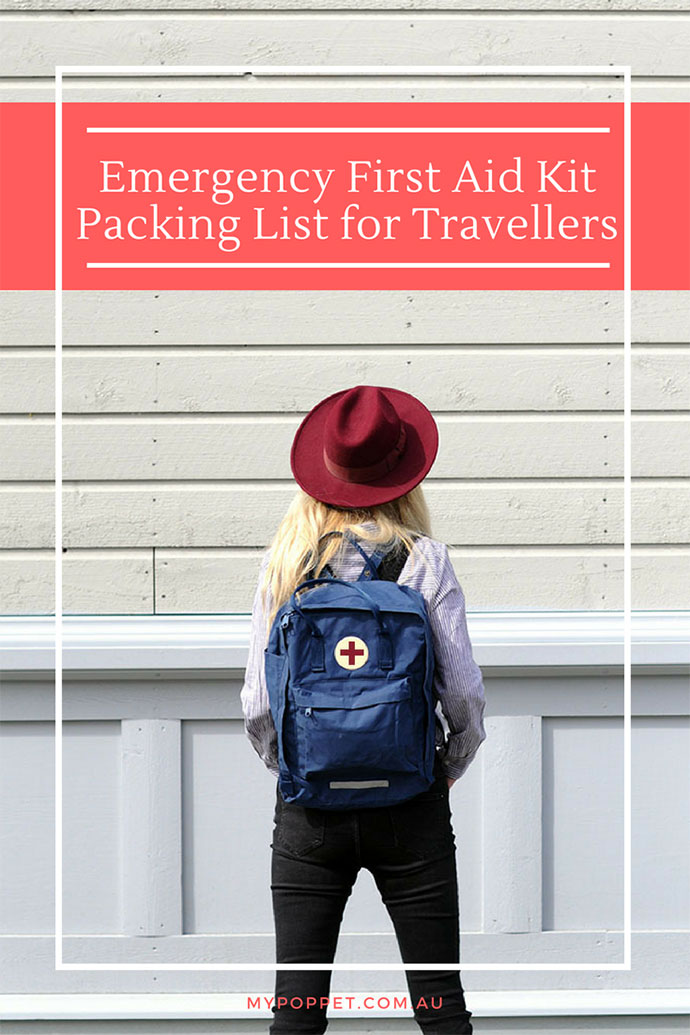
Seasoned travellers are spontaneous by nature, but having a fully-stocked first aid kit on-hand is something that should be pre-prepared, especially when travelling to remote areas.
Whether you’re road tripping across the United States, backpacking around South East Asia or exploring the Australian Outback, there are some essential first aid items you should pack.
Your first aid kit should be tailored for your type of trip, but for the ultimate first aid packing list for nomads of all persuasions, this recommended list of essentials is a great starting point. I’ve also included a handy printable checklist to make your travel packing even easier!
Emergency First Aid Kit Packing List for Travellers
Plasters and bandages
For some people, plasters and bandages are everyday handbag items (especially if you have a proclivity for uncomfortable shoes that rub and give you blisters). When it comes to travelling, though, they are essential.
Whether you’re scaling a cliff face, trekking up a mountain or simply sunbathing at the beach, it’s wise to have plasters and bandages with you in case you scratch or graze your skin.
Gauze
Gauze is a travelling first-aid must-have. It can be used to clean an abrasion or for applying pressure to a wound to stop it from bleeding. If you’re somewhere remote and have grazed your skin, a gauze underneath a thick bandage will help to keep it clean until you can get to professional assistance.
Ensure your first aid kit contains individual sterile gauze swabs so you don’t have to cut them down in size before use.
Adhesive tape
You will need adhesive tape to secure gauze and bandages to a wound. Alternatively, you can use safety pins to secure bandages.
Wound dressings
Your first aid kit should include sterile wound dressings. These are crucial for controlling the bleeding of a cut and will suffice until you get professional medical attention. Hopefully, you won’t need them, but having a few in your bag is a smart idea.
Pain relief medication
Make sure to pack pain relief medication in your travelling bag. Paracetamol and ibuprofen will help ease mild to moderate pain like headaches, fever, tooth pain, muscular pain, etc. Taking them in tablet or capsule form is most convenient.
Antihistamines
If you suffer from allergies, you should ensure that you have antihistamine medication. Even if you don’t suffer from allergies, antihistamine tablets and cream will help to soothe itching and swelling caused by insect bites and stings. This is more important if you’re travelling to rural environments or warmer climates where you will be exposed to more insects.
It’s wise to do your research about the areas you are visiting beforehand, and find out what precautions you should take. For example, you will need to take mosquito repellent and a mosquito net if you’re travelling around Asia.
While most bug bites are benign, they can be very annoying, so you should be prepared.
Antibacterial cream
If you’re unlucky enough to suffer an injury like a cut or graze whilst you’re travelling, the antibacterial cream will help to keep it from getting infected. Keep some in your bag and apply it to any irritation on your skin.
Antiseptic wipes
Similar to antibacterial cream, antiseptic wipes are crucial for keeping an injury clean so that it can heal as fast as possible. And don’t skimp on them – they are readily available at shops and pharmacies around the world, so you can easily re-stock.
Loperamide tablets
Loperamide tablets, also known by their brand name Imodium, will help to stop diarrhoea for short amounts of time. When travelling, eating food or drinks that your body is not used to can play havoc with your stomach.
Diarrhoea is never convenient, but there are certain times when diarrhoea is especially unwelcome – when you have to catch a flight or an overnight bus, for example. Loperamide tablets will allow you to momentarily pause the effects of diarrhoea so you can travel without the trouble.
Tools and instruments
There are certain instruments you will need when travelling, especially if you’re in remote areas, camping or hiking. Trip-dependent, here are some tools you should consider packing in your first aid kit:
- Small scissors – to trim bandages and dressings
- Tweezers – to get splinters, glass, etc. out of wounds
- Safety pins – to secure bandages and dressings
With a fully-stocked first aid kit, you can rest assured that you can take on any route, however spontaneously, and be prepared for any eventuality. After all, it’s better to be safe than sorry!
DOWNLOAD THIS FREE PRINTABLE CHECKLIST HERE
PIN FOR LATER
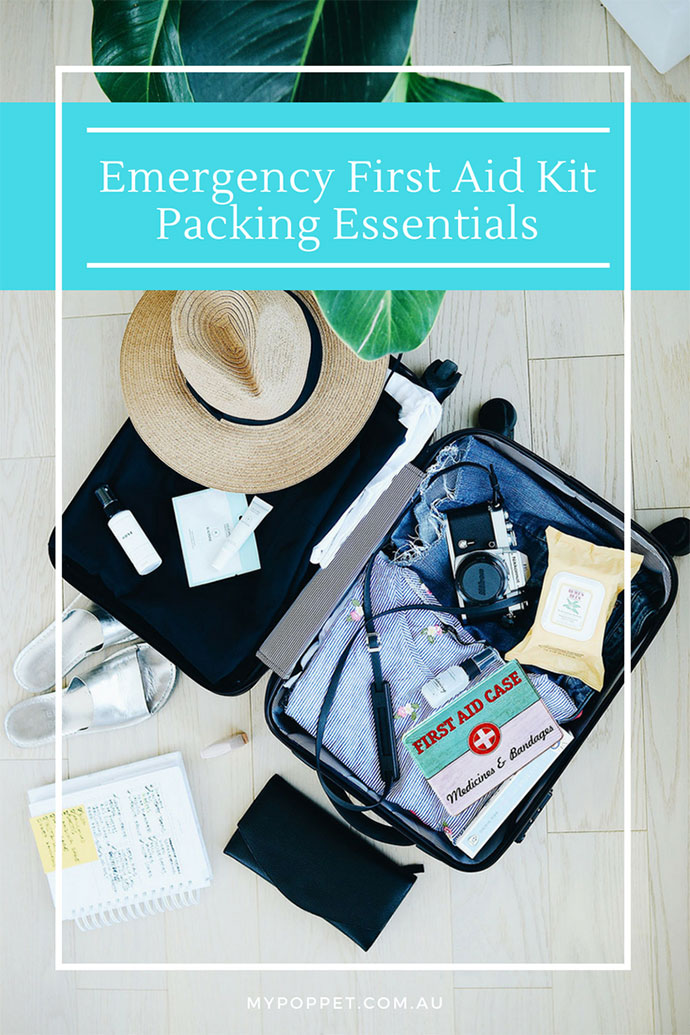
Author Bio:
Sara is the marketing strategist for Survival Emergency Solutions, Australia’s leading provider of first aid products for the home, workplace, vehicle and outdoors. Their Emergency First Aid Handbook is the only book to win the Australian Design Award and has sold over two million copies.

